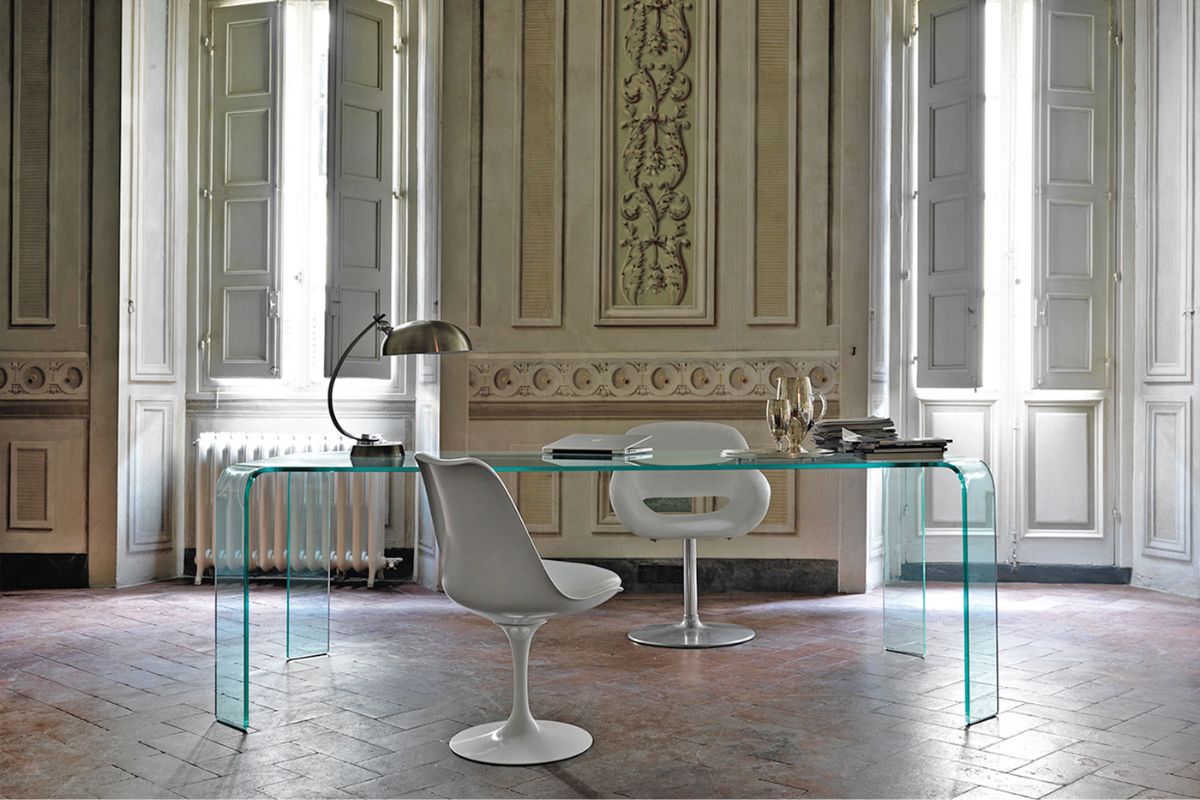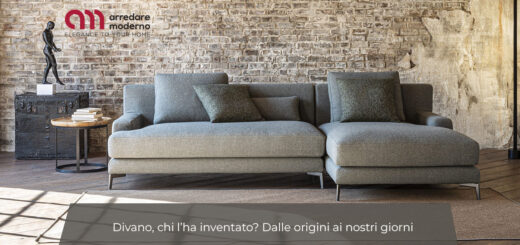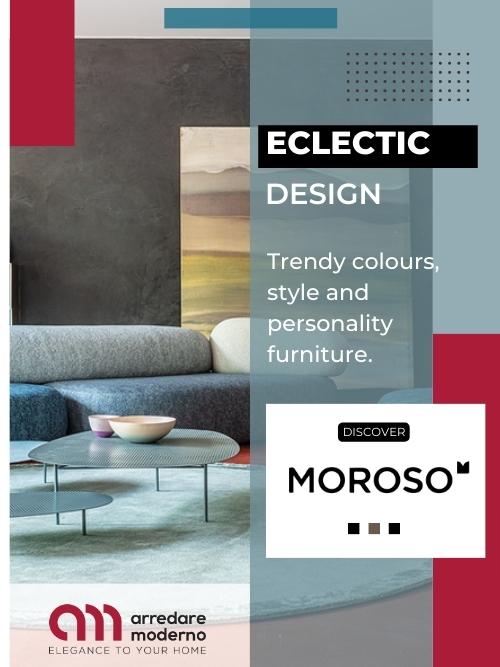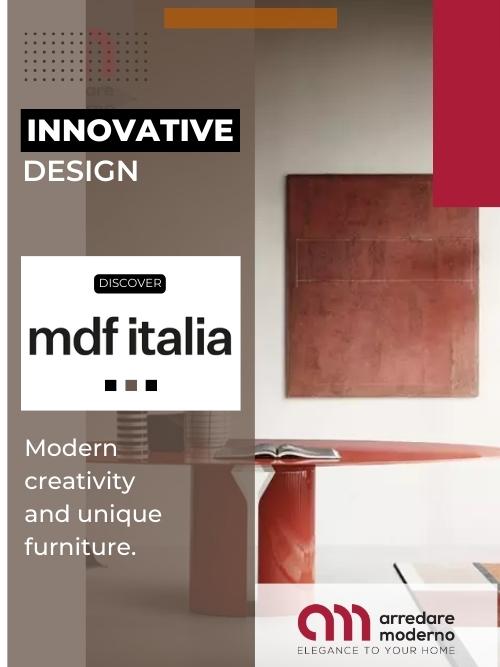The 10 design tables that made history: timeless masterpieces
When it comes to interior design, designer tables are essential elements that combine functionality, aesthetics, and innovation. Over the years, various architects and designers have created tables that have become true icons of the design world. These timeless masterpieces have the extraordinary ability to adapt to different trends and stylistic changes in homes, reflecting people’s tastes and the evolutionary shifts in design itself.
- Designer Tables: A Heritage of Elegance and Creativity
- Tulip by Eero Saarinen for Knoll: A Futuristic Masterpiece
- Ragno by Vittorio Livi for Fiam Italia: Transparent Elegance
- Cavalletto by Luigi Caccia Dominioni for Azucena: The Essence of Minimalism
- LC6 by Le Corbusier for Cassina: Aerodynamic Innovation
- Aalto Table Rectangular by Alvar Aalto for Artek: The Harmony of Wood
- Quaderna by Superstudio for Zanotta: The Rebel of Design
- Doge by Carlo Scarpa for Cassina: The Revolutionary of Ultra-Rationalism
- Nomos by Norman Foster for Tecno: The High-Tech Vision
- Platner by Warren Platner for Knoll: Sculptural Elegance
- Less by Jean Nouvel for Molteni: The Revolution of Simplicity
Designer Tables: A Heritage of Elegance and Creativity
Designer tables have an important mission: to last forever. The architects and designers who create them are driven by an ambitious challenge to design unique models that are at the forefront in terms of style and materials. Some of these tables not only withstand the test of time but also actively contribute to redefining the aesthetic standards of interior decor. Let’s discover together the 10 famous designer tables that have made history.
Tulip by Eero Saarinen for Knoll: A Futuristic Masterpiece
The Tulip table, created by Eero Saarinen for Knoll in the 1940s, embodies a futuristic anticipation. This designer table features a single central leg reminiscent of a tulip’s stem, hence its name. Its unique and captivating shape makes it a timeless work of art, so much so that it was even present on the set of the Star Trek TV series. Its distinctive silhouette and the combination of materials make it a style and innovation icon.
Ragno by Vittorio Livi for Fiam Italia: Transparent Elegance
The Ragno table, designed by Vittorio Livi for Fiam Italia, is an example of elegance and sophistication. Crafted from curved transparent glass or extra-light glass, this table stands out for its sinuous and soft shape. As the winner of the prestigious Compasso d’oro Award in 1987, the Ragno table embodies the harmony between high-quality materials and captivating design. Its versatility allows it to adapt to both work environments and living areas.

Ragno Fiam Table
Cavalletto by Luigi Caccia Dominioni for Azucena: The Essence of Minimalism
The Cavalletto table, designed by Luigi Caccia Dominioni for Azucena in 1947, is an example of essentiality and minimalism. Inspired by the trestles used by the architect during his student years, this table features sophisticated curves and straight lines that bestow it with timeless charm. The simple structure and clean lines make the Cavalletto a design icon with distinctive character.
LC6 by Le Corbusier for Cassina: Aerodynamic Innovation
The LC6 table, a result of collaboration between Le Corbusier, Pierre Jeanneret, and Charlotte Perriand, represents an innovation inspired by aerodynamics. First presented in 1929 in Paris, this table stands out for the combination of structural solidity and the transparency of glass. Its form evokes the aesthetics of airplanes, symbols of functionality and modernity, making it an example of avant-garde design from the 1920s.
Aalto Table Rectangular by Alvar Aalto for Artek: The Harmony of Wood
The Aalto Table Rectangular, created by Alvar Aalto for Artek in 1935, celebrates the harmony of wood and the natural beauty of Finnish birch. Belonging to the L-leg collection, this table is characterized by the use of curved birch plywood for the structure. Aalto’s approach to versatile furniture and his skilled use of materials make it an iconic table that merges industrial and artisanal values.
Quaderna by Superstudio for Zanotta: The Rebel of Design
The Quaderna table, part of the furniture series conceived by the Superstudio group for Zanotta, represents an act of rebellion against conventional design norms. Characterized by regular geometric shapes and squared white laminate, the Quaderna table is part of the Radical Design movement. This movement not only challenged the design status quo but also contested social context, making the Quaderna a work of aesthetic and conceptual protest.
Doge by Carlo Scarpa for Cassina: The Revolutionary of Ultra-Rationalism
The Doge table, designed by Carlo Scarpa for Cassina in 1968, embodies the revolution of Ultra-Rationalism, a movement aimed at transcending the limits of rationalism. Its structure in aluminum or steel, connected by burnished screws, and the glass top lend it a unique aesthetic and distinctive character. With attention to detail and a love for materials, Carlo Scarpa created a table that challenges conventions and redefines the space it occupies.
Nomos by Norman Foster for Tecno: The High-Tech Vision
The Nomos table, created by Norman Foster for Tecno in 1986, celebrates high-tech architecture. Its structure with a central spine, lateral arms, and inclined legs recalls the skeletal form of the human body. This unique and bold design has redefined how we see tables, fitting perfectly into various situations, from individual workstations to meeting tables. Its zoomorphic aesthetics and versatility make it a functional work of art.
Platner by Warren Platner for Knoll: Sculptural Elegance
The Platner table, conceived by American architect Warren Platner for Knoll in 1962, is a masterpiece of sculptural elegance. The structure composed of vertically and horizontally shaped metal rods is nickel-plated and coated with transparent varnish. The glass top with rounded edges completes the harmonious and distinctive aesthetics of this table. The Platner table is not just a functional element but also an artwork that transforms the spaces it inhabits.
Less by Jean Nouvel for Molteni: The Revolution of Simplicity
The Less table, created by Jean Nouvel for Molteni in 1994, embodies a revolution in the simplicity of design. Its aluminum structure, with edges and folds, offers multiple possibilities for use. Its slim outer line and clear geometries reflect Nouvel’s rational approach to design. The Less table redefines the workspace with sobriety and elegance.
The 10 famous designer tables we’ve explored are true masterpieces that have contributed to shaping the history of interior design. These functional artworks embody innovation, elegance, and the creativity of their creators. From Eero Saarinen’s futuristic designs to Superstudio’s rebellious furnishings, each table has a unique story to tell. These iconic pieces not only decorate spaces but also influence how we interact with our surroundings. In a constantly changing world, these tables remain firmly rooted in the history and future of interior design.













